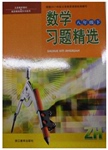题目内容
【题目】如图,该曲线表示一人骑自行车离家的距离与时间的关系.骑车者9时离开家,15时回家.根据这个曲线图,请你回答下列问题:

(1)最初到达离家最远的地方是什么时间?离家多远?
(2)何时开始第一次休息?休息多长时间?
(3)第一次休息时,离家多远?
(4)11:00到12:00他骑了多少千米?
(5)他在9:00~10:00和10:00~10:30的平均速度分别是多少?
(6)他在哪段时间里停止前进并休息用午餐?
【答案】(1) 12时 30千米;
(2) 10:30 半小时;
(3) 17千米;
(4) 13千米;
(5) 10千米/时 14千米/时;
(6) 12时到13时
【解析】解:(1)最初到达离家最远的地方的时间是12时,离家30千米.
(2)10:30开始第一次休息,休息了半小时.
(3)第一次休息时,离家17千米.
(4)11:00至12:00他骑了13千米.
(5)9:00~10:00的平均速度是10千米/时;10:00~10:30的平均速度是14千米/时.
(6)从12时到13时停止前进,并休息用午餐较为符合实际情形.

练习册系列答案
 习题精选系列答案
习题精选系列答案
相关题目
【题目】水量盈余率是衡量水库蓄水量变化的重要指标(水量盈余率=流入量/流出量),下表为某水库各月水量盈余率统计表。读下表完成下面小题。
月份 | 1 | 2 | 3 | 4 | 5 | 6 | 7 | 8 | 9 | 10 | 11 | 12 |
水量盈余率 | 1.31 | 1.21 | 1 | 0.93 | 0.71 | 0.63 | 0.78 | 0.89 | 1 | 1.18 | 1.29 | 1.4 |
【1】下列说法正确的是
A.12月份水库的储水量最大B.3月份水库的储水量最大
C.6月份水库的储水量最小D.9月份水库的储水量最大
【2】该水库最有可能位于
A.西欧地区B.东南亚地区C.地中海地区D.中亚地区



